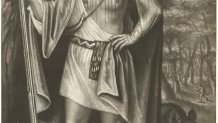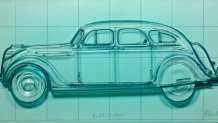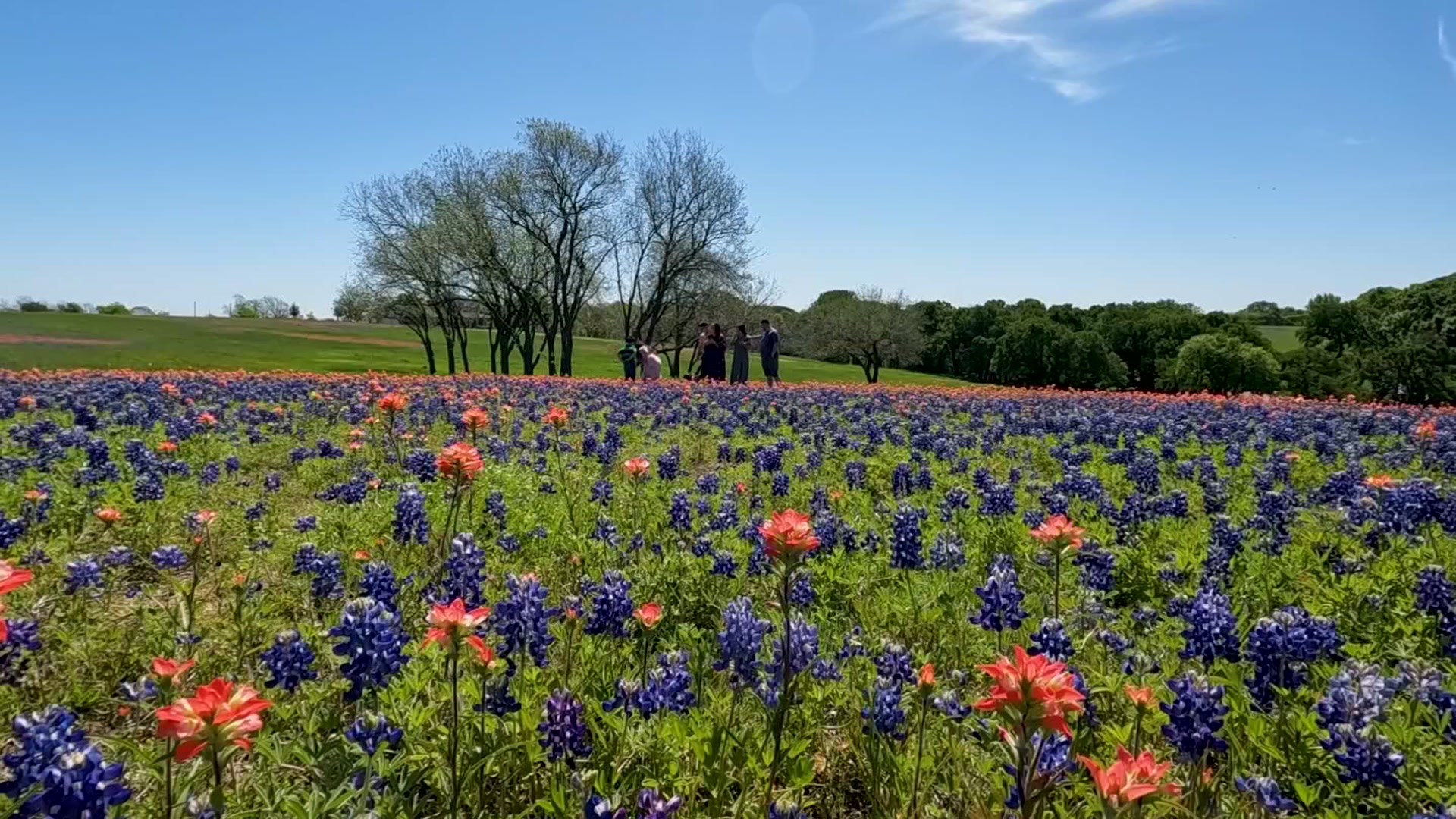America is more than beautiful at Visions of America: Three Centuries of Prints from the National Gallery of Art, now on view at the Dallas Museum of Art through September 3.
The exhibition of more than 150 prints by over 100 artists explores a nation’s journey of self-discovery, from a vast, unknown wilderness to a sophisticated, introspective world power.

Organized chronologically, the exhibition begins with prints dating as early as 1710. Prints were a form of mass communication and as Europeans became more curious about America, prints became a window into an unknown world.
In 1710, four Native Americans traveled to London as part of a British envoy of colonists seeking support for a military campaign. Queen Anne commissioned John Verelst to paint portraits of the Native Americans and John Simon created prints. The prints became popular souvenirs in England.
As the nation grew, artists documented the natural wonders and landscapes of new territories. James Audubon traveled the nation for nearly 20 years, documenting 500 avian species in their natural habitat. The result of his extensive research and watercolors is The Birds of America, with the etchings created by London printer Robert Havell, Jr.
Audubon insisted the birds be presented as life size and used paper measuring 40 inches in height. The bright pink flamingo was still too tall to fit on the page, forcing Audubon to depict the flamingo with its neck bent down.
The Scene
Prints portrayed steamboats majestically sailing down the Mississippi River, common Americans exercising their right to vote at a county election and political viewpoints of the Civil War, but artistic tastes changed in the second half of the nineteenth century. James McNeil Whistler resurrected an interest in etching and advocated for an appreciation of prints based on artistic merits.
“He is the one who launched art for art’s sake without the narrative. Nothing to be said but the appreciation of the effects, the atmosphere within the print,” Sue Canterbury, the Dallas Museum of Art’s Pauline Gill Sullivan Associate Curator, said.
In 1913, The Armory Show introduced modern art movements from Europe and showcased America’s diverse field of modern artists. The theme of the Armory Show was “The New Spirit” and that was best reflected in John Marin’s depiction of the Woolworth Building, symbolic of America’s growing urban centers.
“Marin would write about the excitement of this building. It was the only thing sticking above the skyline at that point in time. Marin depicted on several occasions the energy he felt and he has the building twisting and twirling in space,” Canterbury said.
That urbanization and the exuberance following the conclusion of World War I is represented in the prints of the 1920s. More Americans were living in cities and skyscrapers and cocktails were American icons. Artists depicted the soaring buildings and the varied fates of the people living beneath them. Fortunes changed drastically in the 1930s and prints became important to the survival of artists during The Great Depression.
“You have artists who were either making their living by painting murals under the WAP program or they banded together in associations and they are selling prints. This was affordable art people could get for $5,” Canterbury said.

After World War II, artists playfully captured the spirit of America’s consumerism. Claes Oldenburg’s Profile Airflow is a surprising piece in this exhibition because it doesn’t look like a print at all.
“There is paper and there is basically a print with etched lines, but then he went to this company in California and had them do this sort of plastic embossing that created this wonderful relief and it is sitting on top of the printed lines. It’s pushing the envelope in new ways, partly using some old processes, but also combining it with something new,” Canterbury said.
The exhibition concludes with the nation’s pluralism in the 1960s and 1970s.
“America became more aware that it needs to address the fact that it had become a nation of many peoples, many races and ethnic origins and needed to address and become more inclusive for more people. Many artists were again on the cutting edge, the leading edge of this whole movement to address inequalities,” Canterbury said.
Artists used prints to express the experience of living in America as a minority or to advocate for female representation in all fields, especially art.
“We’re trying to discover ourselves in the beginning and we come full circle where we are again trying to discover ourselves, but more so on the interiority of who we are as a nation,” Canterbury said. “It’s a really great reflection of how we’ve grown as a nation, but it also tells us how far we need to continue to grow.”
The Dallas Museum of Art will be open on July 4.
Kimberly Richard is a North Texan with a passion for the arts. She’s worked with Theatre Three, Inc. and interned for the English National Opera and Royal Shakespeare Company. She graduated from Austin College and currently lives in Garland with her very pampered cocker spaniel, Tessa.



